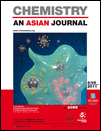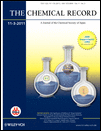今回は趣向を変えて、化学ジャーナルの編集長から当ブログに特別に寄稿された「論文執筆・投稿にあたって留意すべきポイントを掲載します。論文出版の第一線に立つジャーナル編集長からのアドバイスということで、ジャーナルへの投稿経験がある、もしくはこれから投稿を考えている読者の皆さんには参考になるのではないでしょうか。化学分野に限らず、どの分野での投稿にも通じる内容となっていると思います。
かなりの長文ですが、読むとなかなか面白くて削るのが惜しいので、3回に分けて掲載します。各回ごとに、ブログ管理人による日本語訳を付けさせていただきます。拙訳ご容赦下さい!
寄稿してくれたのは、Chemistry - An Asian JournalのEditor-in-Chief, The Chemical RecordのManaging Editorとして日本とも縁が深い、Wiley-VCHのDr. Brian Johnson @chemistrybrian です。日本人からの投稿についての印象も、後の回で述べていますのでご期待下さい。(6月28日追加: 続く第2回はこちらです!)
Editors see a lot of papers, more than many readers imagine. For every paper that is eventually accepted, top journals will give full consideration to as many as three or four papers that will unfortunately be rejected. It is not uncommon these days for a journal to receive several hundred manuscripts in one month, and a single editor may handle thousands of papers within a year. So how can an author be sure that his or her paper does not get lost in the numbers? Here I’ve put together some of the issues that tend to play a role in the process of publishing that are not always covered in author guidelines.
-
Considering your audience: As you well know, scientists have access to an overwhelming amount of data but have increasingly limited time in their schedule. Thus, I always ask authors to consider the reader in every phase of organizing an article. Can your reader easily find out what is important in the work? Can your reader easily find the necessary data (for, example, in clearly labeled tables and schemes)? What potential use might your work have directly in your reader’s laboratory? If referees can quickly find the answers to these questions, they will also be more likely to give a positive assessment.
-
Using templates: Some authors see the submission template as a benefit only for the editor, but it is really helpful for the author’s chances for acceptance. When referees receive a manuscript that is already in the template, they are much more willing to do review the article. Plus, they can already “envision” your work as a formal scientific document and are often more open to its contents.
-
Cover letter: A good cover letter is more valuable than many authors believe. First, it gives the editor a good overview of why he or she should consider your article. Remember that the editor sees many more manuscripts than can be accepted, and an editor is often immediately less convinced by an article if the author cannot explain its importance concisely.
(To be continued)
(日本語訳)
編集者は大量の論文を読みます。普通の読者が思うより、もっと多く読みます。一流のジャーナルの場合、1報の論文がアクセプトされる裏で、3,4報もの論文が十分な考慮の末、不幸にもリジェクトされているのです。ひとつのジャーナルが月に数百報の原稿を受け取ったり、ひとりの編集者が年に数千もの論文を扱ったりすることは、いまどき珍しくありません。だとすれば、著者は自分の論文が大量の論文の山に埋もれないようにするために、どうすればいいでしょうか。以下に私がまとめたポイントは、論文出版の過程で重要な役割を果たすにもかかわらず、必ずしも投稿規定には明記されていない事柄です。
-
読者を考慮せよ: 皆さんもよくご承知の通り、科学者は膨大な量のデータにアクセスできますが、日々のスケジュールの中で持てる時間は次第に限られてきています。そのため、私が著者に必ずお願いすることは、論文を構成するどの段階においても読者のことを考慮せよ、ということです。その研究のどこが重要か、読者にすぐに分かりますか? 読者は、(例えば軸ラベルが明確に示された表や反応スキームの中で)必要なデータを容易に見つけられますか? あなたの研究は、読者の研究室で直接使えるような潜在的な用途として何を持っていますか? こういった質問に対する回答を査読者がすぐに見つけられるような論文であれば、好意的な評価を受ける可能性は高まるでしょう。
-
テンプレートを使う: 著者の中には、原稿提出用のテンプレートを、編集者のためにしか役に立たないものと考える人がいます。しかしテンプレートは、論文がアクセプトされる可能性を高めるのに非常に役立ちます。テンプレートを使った原稿を受け取ると、査読者はその原稿を査読しようという意欲が高まります。さらに査読者は、あなたの論文を正式な科学的著作として思い描き、その内容を前向きに受け取るようになることも往々にしてあるのです。
-
カバーレター: いいカバーレターは、多くの著者が思うより価値のあるものです。なぜなら、論文がなぜ考慮に値するかを編集者によく伝えるからです。編集者が、実際にアクセプトされるよりずっと多くの論文に目を通していることを忘れないで下さい。もし著者が自分の論文の意義を簡潔に説明できないとしたら、その論文は編集者に対する説得力を直ちに失うことも稀ではありません。
(次回に続く)
いかがでしたか? 続く第2回・第3回は来週中に掲載の予定です。お楽しみに!(6月28日追加: 第2回をこちらに掲載しました!)






 ChemistryViews (無料ニュースサイト)
ChemistryViews (無料ニュースサイト) Facebookページ: Chemistry by Wiley
Facebookページ: Chemistry by Wiley Wiley Asia Blog
Wiley Asia Blog Wiley Job Network(求人サイト)
Wiley Job Network(求人サイト) ワイリー・ヘルスサイエンスカフェ(医学・看護学・獣医学ブログ)
ワイリー・ヘルスサイエンスカフェ(医学・看護学・獣医学ブログ) 電子プラットフォーム Wiley Online Library
電子プラットフォーム Wiley Online Library Neutrino WebShop(株式会社ニュートリノ)
Neutrino WebShop(株式会社ニュートリノ) オーヴィス株式会社(理工洋書専門書店)
オーヴィス株式会社(理工洋書専門書店)